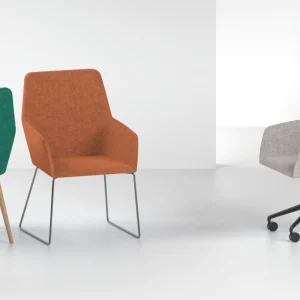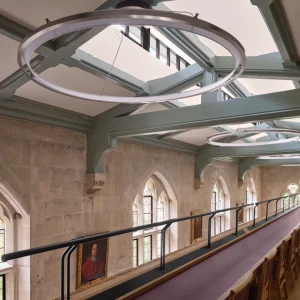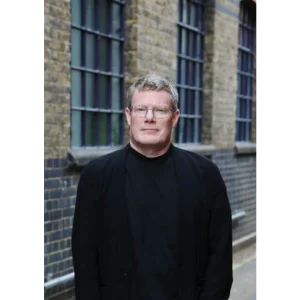
Sketches of ideas for the Lanzarote Landscape
Laura Allen and Mark Smout are preparing for their first major commission, an installation on the theme of land art that continues their research into the symbiotic relationship between architecture and its location. But UK audiences will have to wait to see their work: the show takes place at the Nevada Museum in Reno. Curated by Bldgblog founder Geoff Manaugh, Smout Allen’s contribution will be an object several metres long and suspended in the main gallery. They are currently hoping to take a sabbatical from their teaching posts at the Bartlett architecture school to build the installation in a shed at the bottom of their east-London garden.
Both partners have key roles at the Bartlett, where they have taught since the 1990s: Smout is postgraduate thesis director; while Allen is director of the undergraduate school. In addition they run a unit together, which is one of the most popular among students, and they also find time for their own research, for publications, and for entering competitions. In 2007 their book Augmented Landscapes was published by Princeton Press as the 28th in the Pamphlet Architecture series, following in the footsteps of the likes of Lebbeus Woods and Zaha Hadid.
Their small office at the Bartlett doubles up as a laboratory. On the shelves are cans of spray paint; a sign taped to the wall reads ‘sorry about the smell’, and their desk looks like the workshop of a clockmaker, strewn with small metal parts and a disc that they will assemble into a model that will be exhibited as part of a show at Sci-Arc, California in March. Other models resemble measuring instruments; Victorian domed-glass specimen cases, or early cinematic devices. Although the subject of their work is architecture and its context, they are equally fascinated by representation, and they enjoy the ambiguity of scale-models, which can be read variously as replicas, prototypes or actual specimens.
It’s puzzling that Smout Allen are not better known in the UK, however their life as academics means total dedication to the students, and leaves little time for self-publicity. Fortunately they seem to enjoy learning as much as their students do and they seem endlessly generous with their ideas. Smout explains their long-term commitment to teaching as down to their ‘low boredom threshold’, which means they are constantly exploring new areas and projects.
They joke about the term ‘landscape’, which can pigeonhole their work as worthy, but which they put up with because it earns them brownie points with the university. Unlike much design for the environment, Smout Allen are not driven by a moral, sustainability agenda. Instead they talk about ‘Neonature’ and conduct detailed research into the ‘friction between progress and conservation’. Their latest project has taken them to the Lanzarote Unesco World Biosphere Reserve, where they are looking at antithetical relationships such as protected species versus genetic engineering, the national park versus Silicon Valley.

Rather than frowning on the idea of interfering with nature, they seem to enjoy the process of exploring it and presenting practical solutions to specific sites. All this is refreshing compared to the generalized environmental concerns that often drive student projects.
Manaugh, who has championed their work on Bldgblog is a self-confessed fan: ‘Their focus on naturally occurring material processes – from water pressure and the instant aneous freezing of river surfaces to coastal erosion – gives their work the inspiring feel of a scientific investigation. In fact, sometimes it feel like some rogue branch of the planetary sciences. I’m also consistently amazed at the quality of the work produced by their students – the sheer level of craft is awesome. The results invariably look more like half-mad, carnivalesque toys, but that also proves how fun architectural design can be.’
The emphasis on research makes their students some of the most sought after with architecture firms, but they also stress that it’s important to have a real building at the end of the process. They came close to a commission with a 2005 competition for the Kielder Observatory. An intriguing model of the scheme design sits on a shelf in their office. Titled Black and Light, it explores the phenomena of Glitter patterns, and consists of a mirrored base and chrome plate that creates an optical illusion for the viewer peering in from above. The Observatory was to be a controlled setting for high-spec technical equipment and would be ‘disguised’ in the still of the night. It is our loss that Smout Allen haven’t yet completed a real building: surely it cannot be long before an enlightened patron realises the potential of their ideas at full scale.
Smout Allen is part of the London Eight exhibition curated by Peter Cook at Sci-Arc California, 19 March-9 May. www.sciarc.edu







